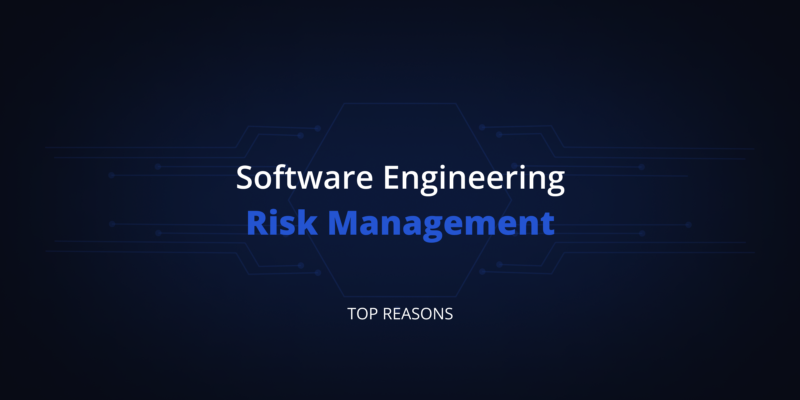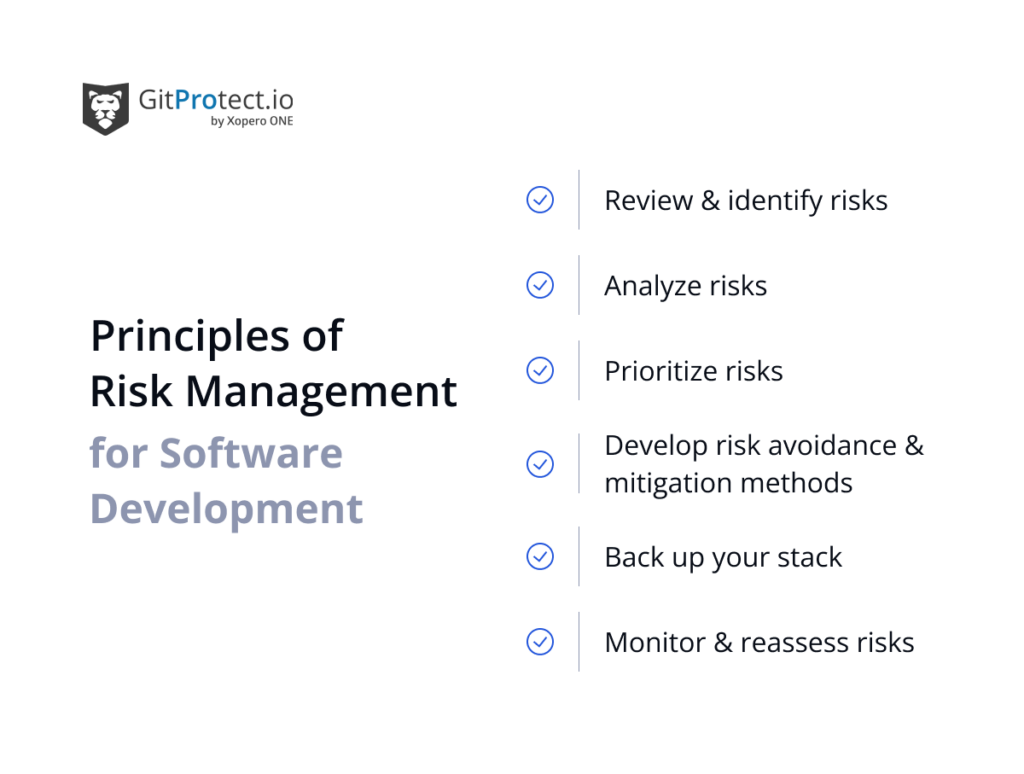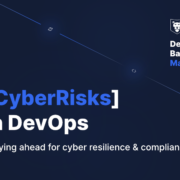
Top Reasons For Risk Management In Software Engineering
Want to be proactive and mitigate risks? Have your source code backed up… Try GitProtect.io backups for DevOps tools.
In software engineering, by risks we mean events or factors that pose a possibility to impact the outcome of a project. These risks can be both internal and external. Managing them involves: detecting, assessing, and dealing with vulnerabilities that could affect the project. So, the main advantage of effective risk management is that it helps to produce high-quality software on time and within established budget.
Now, let’s get into the risks involved in software development projects, and how you can guarantee project success with appropriate risk response strategies.
Risks in software engineering
Some of the common reasons for risks in software projects are things like the change of requirements on the user’s or client’s end; then, there are technological advancements – you might be using outdated or unproven tools, which puts you at a disadvantage; then, there are challenges at the organizational level like poor management or communication. Let’s categorize risks into three main types of potential threats associated with software development process:
| Project risks & operational risks | These are problems regarding proper scheduling, managing the budget, low productivity, problems with communications, resource and staff allocation, as well as customer-related issues. |
| Technical risks | Here we have to consider issues with poor code quality, testing, maintenance, methods used, integrations or implementations. In addition, if you choose the wrong tech stack for your project, it will also be problematic. Moreover, things like incomplete, changing or over ambiguous specifications, also fall under this category. However, it is worth noting that these risks often are caused by the lack of sufficient knowledge about the project by the development team. |
| Business risks | These are associated with the organization’s business plans, operations and interests. Some examples would be: issues with the budget, lack of consistency in priorities, stakeholders’ expectations not met, no written & signed partnership contracts, unclear metrics – if the time and money investments are worth the outcome. |
A few words about internal risks
In terms of software project development, such risks can be both internal and external. Internal risks depend on the project team and organization. For example, if you schedule the release dates too ambitiously, the actual project’s release might lead to missed deadlines and project goals won’t be met. In addition, poor skills throughout your team could result in decreased quality of your project and, as a consequence, slow down your software development processes. This, in turn, will make it difficult for your organization to meet the project’s expectations.
Another huge risk is human error; let’s say one of your employees deletes a critical part of your source code or issues in your Jira – with no proper backup & DR solution in place, all of your data is gone and unrecoverable.
Furthermore, if communication within your team is badly coordinated, it will more than likely result in misunderstandings, mistakes, and improperly aligned expectations – all of these can negatively impact the project success.
External risks – what you need to know
On the other hand, external risks, are kind of beyond the control of the project team but can still have significant effects on the progress of your projects. If there is a change related to industry regulations, you may have to deal with increased compliance requirements, which will put you at risk of non-compliance; that would increase complexity and more than likely delay project timelines.
Market competition is another external risk; if one of your competitors launched a product, which could be considered better than yours, you may have to deal with the fact that your product’s relevance on the market is reduced, and therefore, chances of success much slimmer.
Additionally, we should mention economic factors, like recessions, that can have an impact on the possible funding opportunities for your project and the availability of resources; taking that into account the sustainability of your project could end up in shambles.
Furthermore, vulnerabilities in security such as data breaches or ransomware attacks can result in devastating data loss and put the integrity and confidentiality of the software in danger, if you do not have a robust backup and DR solution in your cyber defences.
Check our threat-related series of articles:
📌 GitLab Vulnerabilities And Security Incidents: 2023 In Review
📌 Atlassian security incidents: 2023 in Review
📌 Infamous GitHub-related Incidents And Threats: 2023 in Review
What are possible consequences of poor risk management?
The consequences of poor risk management during the software development process can be serious and could have long-term effects. One of the worst-possible outcomes for you or your organization would be a total project failure or lengthy delays. Additionally, increases in costs and budget overruns are also typical, when unexpected challenges require extra resources.
Another consequence would be lowered quality. Since unresolved risks can lead to defects and poor performance, your customers will most likely be unsatisfied and you will receive negative feedback. This can damage your project’s and organization’s reputation.
Legal concerns and non-compliance with regulatory standards are also major risks. They can result in penalties, fines, and even project shutdowns in serious cases.
Next, we have security disasters which lead to data loss. Source code theft, accidental deletions and ransomware attacks that can have huge consequences, including financial loss, legal penalties, and, of course, the loss of your customers’ trust.
Therefore, an effective risk management is important for forecasting, preventing or dealing with the negative consequences.
How to manage risks in software engineering
First things first, let’s break down what project managers should do in order for a successful implementation of a risk management plan. To analyze and manage the potential risks, you should identify, address, and eliminate issues before they escalate to the point of having a negative effect on your software project or organization as a whole.
Principles of risk management in software development
There are lots of software development risks involved in creating your digital product. Whether they are major risks or common technical risks, it’s worth having all the certain risks evaluated… And then, you should move on to crafting your risk management plan.
In the first stage of risk management you should review and identify risks. This could include things like brainstorming sessions, analyzing historical data, and consulting stakeholders to identify potential dangers for your project.
Once you’ve finished risk identification, you should make sure to analyze the possible chance of the risk to take place and the impact that the risk could have. Some of the things you can do involve doing qualitative and quantitative assessments to find out how each potential risk can affect the project and it’s probability to happen. Keep in mind that you should have a forward-looking view and take into consideration the threats which may arise in the future, therefore, you should implement plans to deal with potential risks in the future.
After you have analyzed the likelihood and the impact of risks concerning your project, you can move on to prioritizing. Grade the possible threats according to their severity and probability. That will help you deal with the most significant risks, which require immediate attention and resources.
Next, develop a risk-management and mitigation method. This would include designing a plan of action to help you manage high-priority risks, such as preventive measures, implementing of data protection strategies, contingency plans, backup of your critical data, and effective resource allocation. But, you still have to keep in mind that frequent communication is important for this step.
Finally, it is critical that you track and continuously reassess risks at all stages of the project lifecycle. You should carry out regular risk assessments, update risk management strategies accordingly, and maintain clear communication with the project team to guarantee that all risks which potentially endanger your project are properly managed as your work is progressing.

Challenges of risk management in software engineering
It is important to know, that even though this is a beneficial process, it does come with a set of challenges and other factors. One of these is the difficulty to identify all of the potential risks, especially in complicated projects with many unknown variables. If your resources are restricted you can also find it difficult to carry out your complete risk mitigation strategy according to plan because you or your development team could simply lack the necessary time, resources, or experience.
Your next opponent is balancing risk management with project timetables and budgets. In order for your risk management strategy to be effective it requires time and resources, which might be hard to find if the project deadlines are short and financial resources are limited. It is important that your engineering teams adhere to risk management rules but that can be similarly difficult, since it requires clear and frequent communication, training, and a culture that calls for proactive risk management.
Finally, risk avoidance might become more difficult for you within the continuous development of your project. Since your projects are consistently being worked on, requirements may shift, new technologies may be added, and as a result unexpected issues may arise. That would demand you to implement agile and adaptable risk management systems.
The importance of backup and DR in your software risk management plan
There is always a chance that risk occurs during the software development process. That’s why as a security measure it’s worth having a backup of the source code. You can try to write your own backup script or use professional backup tools for DevOps stack. The difference is in risks and time you may spend on backup performance. If you opt for a backup script, you will need to take care of writing the script, checking its performance, and, in case of a disaster, writing a recovery script. All of that can become time-consuming and gives no guarantee that in an event of failure you will be able to restore your data fast and resume workflow continuity in minutes.

On contrary, professional backup and Disaster Recovery software for DevOps stack, like GitProtect.io, can help with automation of backup performance, and guarantee fast recovery to ensure continuous workflow. Since software development involves making changes to your code constantly, a third party backup vendor could prove as one of your useful project risk management tools. Safety measures like backup should be included in the project planning and be implemented from the start of your software project to eliminate the consequences of ransomware, human error (like accidental or intentional deletion), or outages.
Moreover, comprehensive backup and DR software can help organization to meet the Shared Responsibility duties and compliance requirements.
Check out how GitProtect.io helps its customers to meet their compliance needs:
“With GitProtect.io we were able to bring all our Git repositories into backup compliance with the use of a single tool.”
Mark Pace, CTO at Red5
Takeaway & top reasons to implement a risk management plan in software development projects
Hopefully, by reading what we have discussed in the article, you now agree that a risk management plan is a must-have in software engineering, because projects can become a subject to many risks. If you proactively detect, assess, and manage these risks, you or your teams can guarantee that the projects which your organization run smoothly, meet the quality requirements, and satisfy your stakeholders.
Also, it’s worth bearing in mind that software risk management process has to be a continuous one in order to ensure project success. What’s more, you shouldn’t neglect the importance of backup solutions such as GitProtect.io to keep your data available, recoverable and protected at any given moment.
Now, just to recap, here are the main reasons for proper implementation of risk management into your software development project life cycle:
- Effective risk analysis & monitoring
- Early detection of issues
- Better project management & planning
- Stakeholder satisfaction
- Improved decision-making
- Reduced costs
- Deadlines met
- Guaranteed quality and compliance
- Ability to adapt to change
- Team collaboration
- Better documentation & logs
- Data integrity, availability, recoverability and protection
[FREE TRIAL] Ensure compliant DevOps backup and recovery with a 14-day trial🚀
[CUSTOM DEMO] Let’s talk on how backup & DR software for DevOps can help you mitigate the risks






